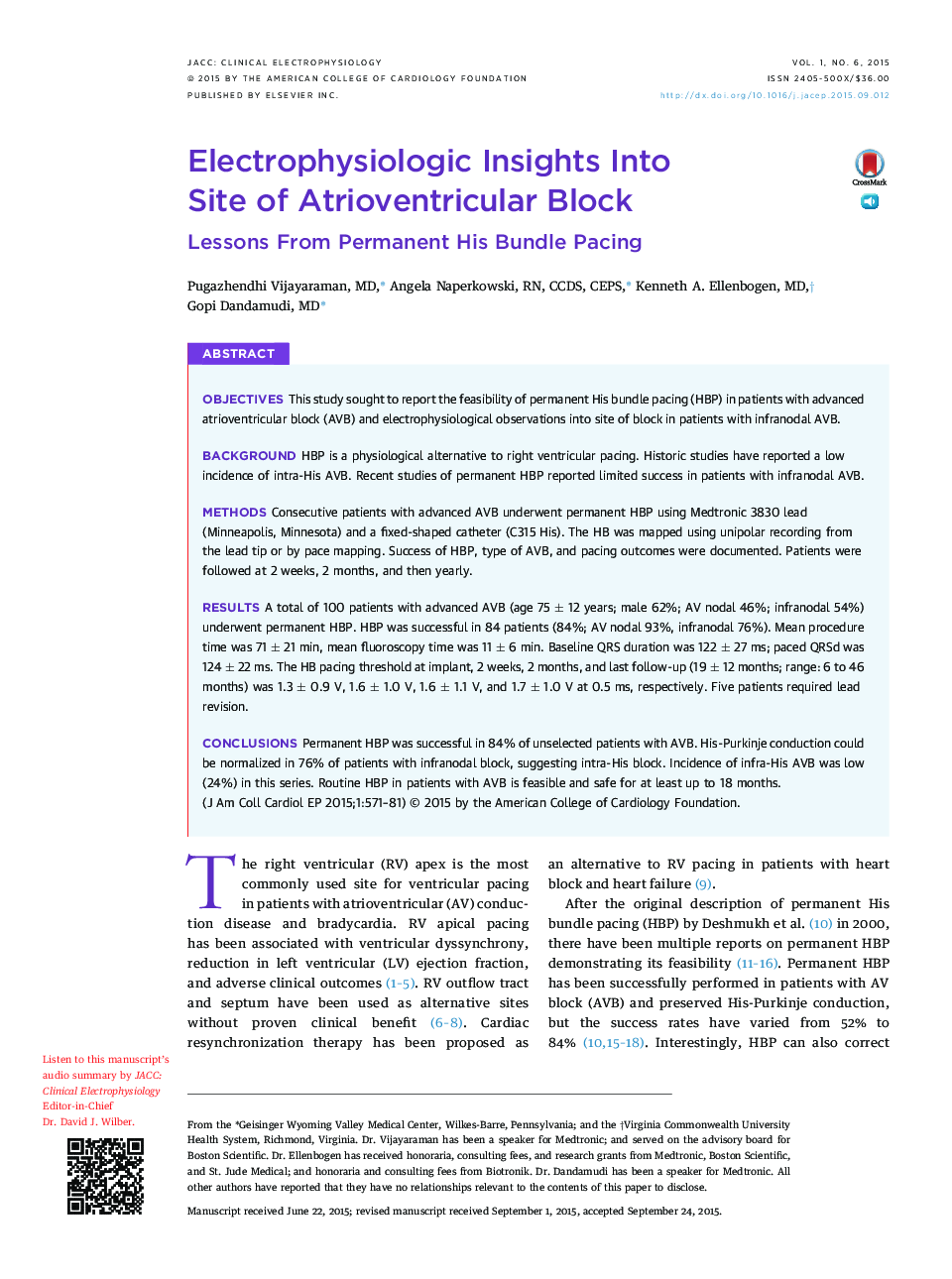| Article ID | Journal | Published Year | Pages | File Type |
|---|---|---|---|---|
| 2942275 | JACC: Clinical Electrophysiology | 2015 | 11 Pages |
ObjectivesThis study sought to report the feasibility of permanent His bundle pacing (HBP) in patients with advanced atrioventricular block (AVB) and electrophysiological observations into site of block in patients with infranodal AVB.BackgroundHBP is a physiological alternative to right ventricular pacing. Historic studies have reported a low incidence of intra-His AVB. Recent studies of permanent HBP reported limited success in patients with infranodal AVB.MethodsConsecutive patients with advanced AVB underwent permanent HBP using Medtronic 3830 lead (Minneapolis, Minnesota) and a fixed-shaped catheter (C315 His). The HB was mapped using unipolar recording from the lead tip or by pace mapping. Success of HBP, type of AVB, and pacing outcomes were documented. Patients were followed at 2 weeks, 2 months, and then yearly.ResultsA total of 100 patients with advanced AVB (age 75 ± 12 years; male 62%; AV nodal 46%; infranodal 54%) underwent permanent HBP. HBP was successful in 84 patients (84%; AV nodal 93%, infranodal 76%). Mean procedure time was 71 ± 21 min, mean fluoroscopy time was 11 ± 6 min. Baseline QRS duration was 122 ± 27 ms; paced QRSd was 124 ± 22 ms. The HB pacing threshold at implant, 2 weeks, 2 months, and last follow-up (19 ± 12 months; range: 6 to 46 months) was 1.3 ± 0.9 V, 1.6 ± 1.0 V, 1.6 ± 1.1 V, and 1.7 ± 1.0 V at 0.5 ms, respectively. Five patients required lead revision.ConclusionsPermanent HBP was successful in 84% of unselected patients with AVB. His-Purkinje conduction could be normalized in 76% of patients with infranodal block, suggesting intra-His block. Incidence of infra-His AVB was low (24%) in this series. Routine HBP in patients with AVB is feasible and safe for at least up to 18 months.
